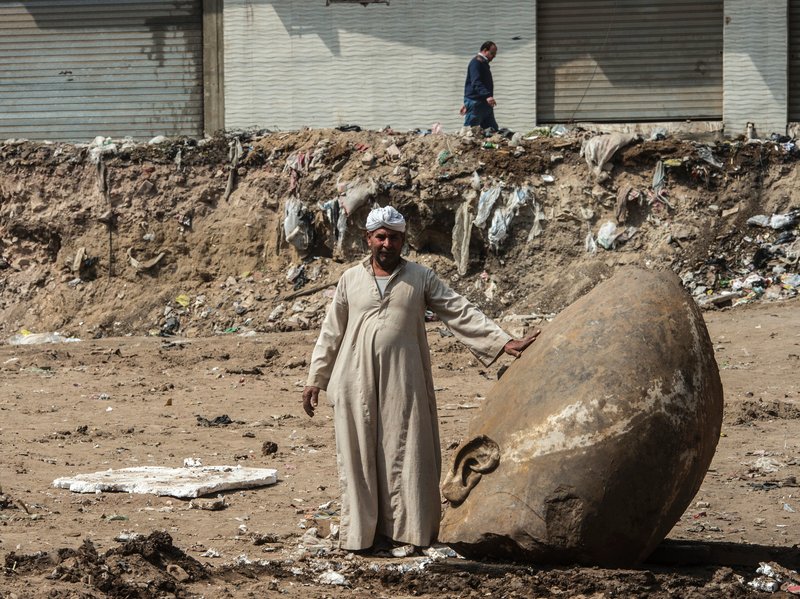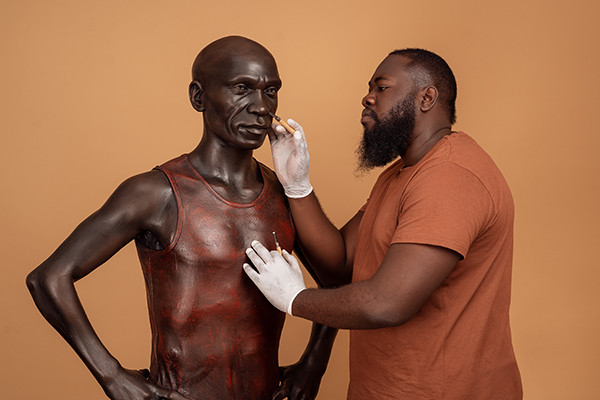
Massive Ancient pharaoh statue uncovered in a mud pit in Egypt

Archaeologists have discovered a 26-ft high statue of ancient pharaoh in Cairo mud pit.
The statue that can be dated back more than 3,000 years is believed to be a head depicting Ramses II one of the country’s most famous ancient rulers was discovered in a Cairo slum according to Reuters.
The statue of Pharaoh Ramses II was pulled from mud and groundwater by a bulldozer on Thursday. It has been hailed by the Egyptian Antiquities Ministry as one of the most important ever, was made near the ruins of Ramses II’s temple in the ancient city of Heliopolis, located in the eastern part of modern-day Cairo.
“Last Tuesday they called me to announce the big discovery of a colossus of a king, most probably Ramses II, made out of quartzite,” Antiquities Minister Khaled al-Anani said on Thursday at the site of the statue’s unveiling.
A joint German-Egyptian research team found the statue beneath the water level in a Cairo slum that stands where Heliopolis, one of the oldest cities in ancient Egypt and the cult center for the sun god, once was.
Ramses the Great was the third of the Nineteenth Dynasty of Egypt and ruled from 1279 to 1213 BCE.
The joint Egyptian-German expedition also found the upper part of a life-sized limestone statue of Pharaoh Seti II, Ramses II’s grandson, that is 80 centimeters long.
“Antiquities Minister Khaled al-Anany stressed on Thursday that the discovery is one of the most important recent archaeological discoveries, as it demonstrates the greatness of the temple in ancient times in terms of the magnitude of the building and the statues which were adorned by precise fine patterns and inscriptions” says Egypt Independent






